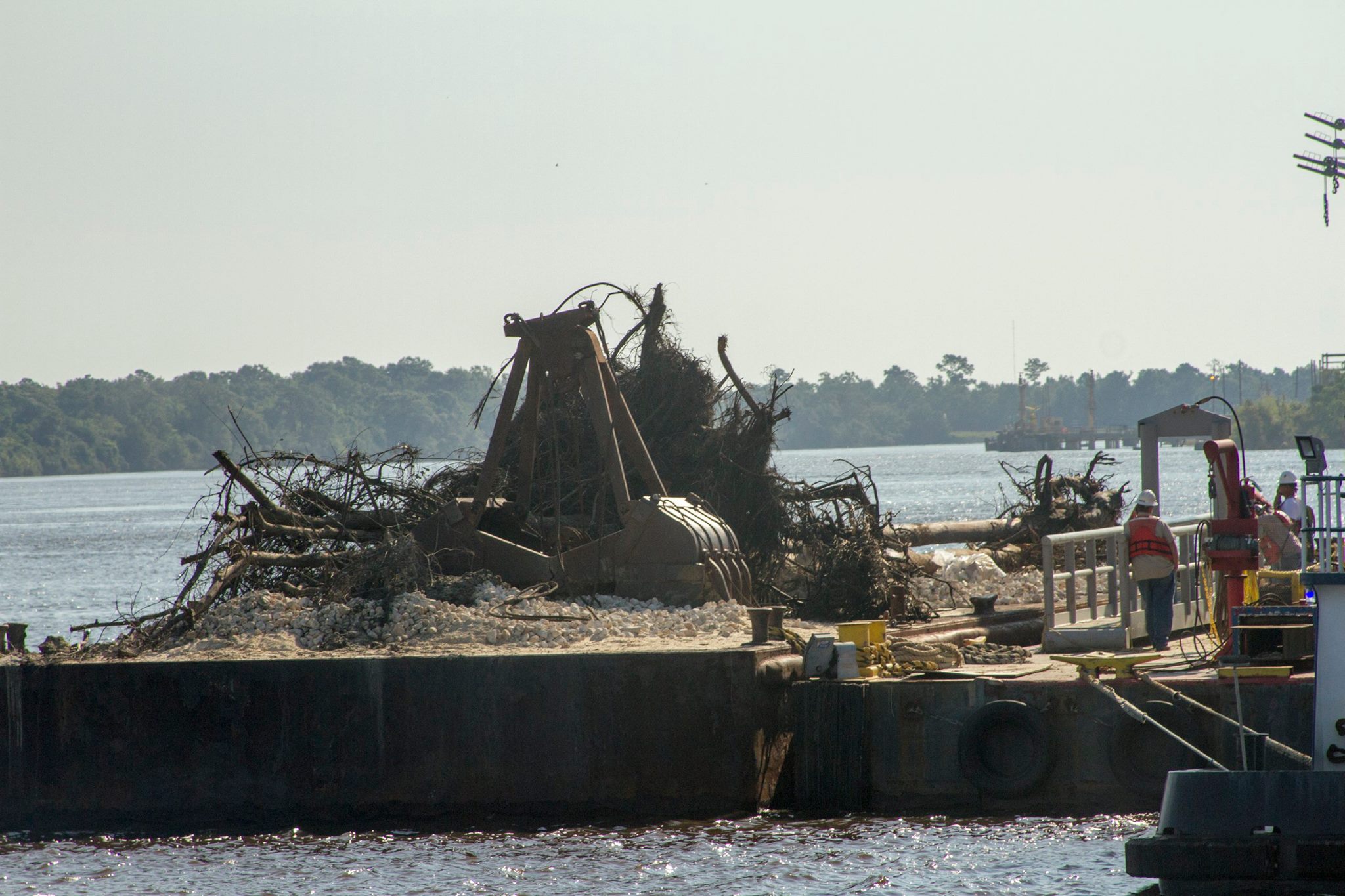Indian Seafarers Freed After Months of Detention at Yemen’s Ras Isa Port
India says it has secured the release of more than 150 seafarers who were stranded at Yemen’s Ras Isa Port, according to the Directorate General of Shipping. All 11 vessels...

Crews remove debris from the shipping channel to the Port of Beaumont, in Texas. Photo: USACE
![]()
By Julia Simon NEW YORK, Sept 15 (Reuters) – While crude deliveries by larger ships to Beaumont in Texas remain restricted after Hurricane Harvey, a workaround using pipelines can supply Exxon Mobil’s refinery there, shipping sources said.
Beaumont’s port has been closed to ship traffic over 26 feet (8 meters) since Sept. 9 by the U.S. Coast Guard, because of shoaling – sediment or sand that washes up on the bottom of the waterway and hampers shipping traffic.
Exxon has other options for receiving crude, as nearby discharge points at Port Arthur and Nederland are still available, and pipes can bring crude up to the refinery. Exxon, however, tends to export refined products direct from the Beaumont port dock, said Brian Hass, operations manager for shipping broker Host Agency in Beaumont.
Exxon Mobil’s facility can refine 362,000 barrels of crude a day. Brent Rahe, Coast Guard vessel traffic supervisor at Port Arthur, said there’s a high spot in the river that could hinder vessels near the Beaumont port and Exxon Mobil’s refinery.
Ships in that waterway are restricted to a 26-foot draft, the Coast Guard said, as opposed to the 40-foot (12-meter)allowance before the storm that allowed large ships that deliver crude into the channel. It is unclear when the U.S. Army Corps of Engineers will be able to dredge the Beaumont waterway, Rahe said.
That could eventually cause difficulties for product exports, Hass said, once Beaumont is fully functioning again in the wake of Harvey. That refinery is still in the process of restarting, however.
The refinery expects to be back at full capacity by month-end, a spokeswoman said; the company did not answer questions about the ship channel. Since Harvey struck, overall imports into the Gulf Coast have slumped.
The Beaumont port is the furthest inland port on the Sabine Neches, a long curving waterway that empties into the Gulf of Mexico. The storm shut traffic at several ports, and while some, like Houston and Corpus Christi, have reopened to shipping traffic, they are still subject to restrictions on the depth of cargoes that can come up their respective channels.
Ships with a 38-foot (12-meter) draft – which can accommodate crude deliveries – are able to make their way to Sunoco’s terminal, which has pipelines, that can deliver crude to Exxon Beaumont, said Hass.
Exxon Beaumont’s facility imported 18.6 million barrels of oil in 2016, according to U.S. Energy Information Administration data. (Reporting by Julia Simon in New York; Editing by Jonathan Oatis)
(c) Copyright Thomson Reuters 2017.

Sign up for gCaptain’s newsletter and never miss an update

Subscribe to gCaptain Daily and stay informed with the latest global maritime and offshore news


Stay informed with the latest maritime and offshore news, delivered daily straight to your inbox
Essential news coupled with the finest maritime content sourced from across the globe.
Sign Up